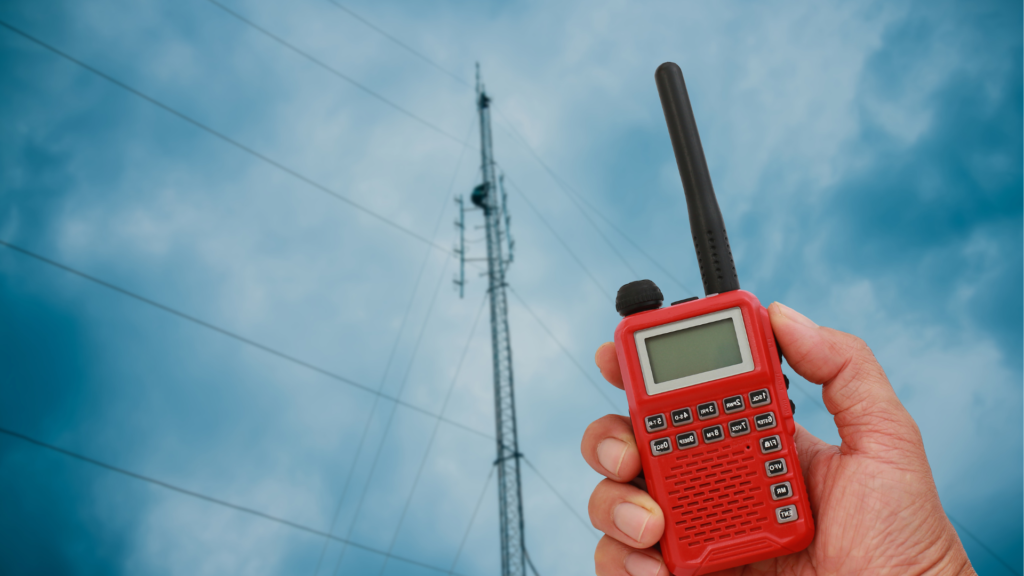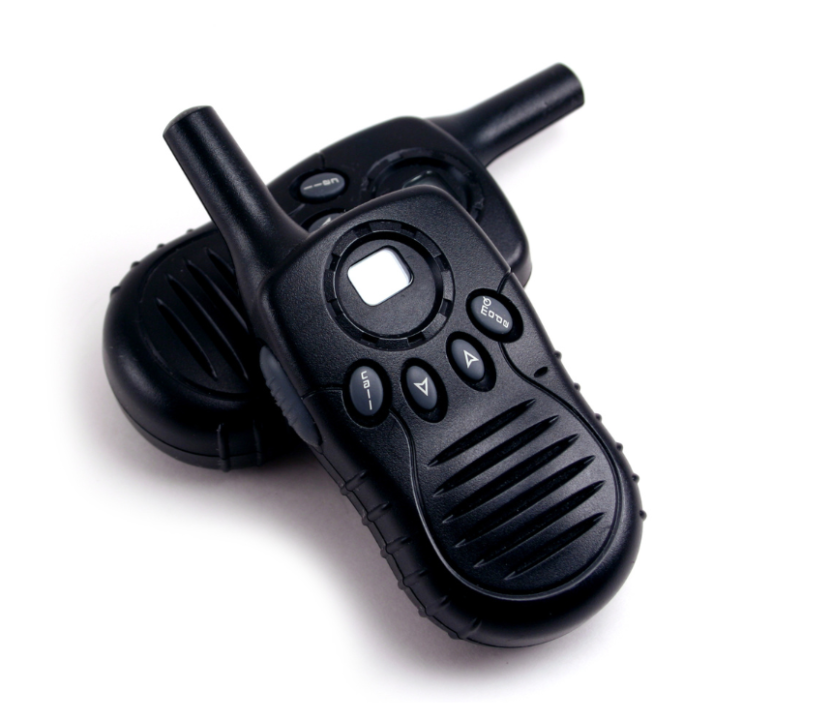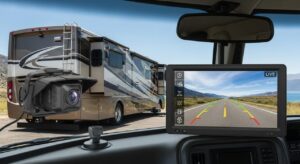How Far Does Walkie Talkie Work?

Introduction
Walkie talkies, also known as two-way radios, have been a reliable means of communication for decades. They are widely used in various industries, including public safety, construction, outdoor activities, and even by families for recreational purposes. Understanding the range of a walkie talkie is essential to maximize its effectiveness in different situations. In this article, we will explore the basic working principle and factors that affect the range and provide insights into how far does walkie talkie work.
How does Walkie Talkie Work ?
Walkie talkies are portable communication devices that work on radio frequencies to transmit and receive audio signals over short distances. They consist of a transmitter and a receiver, both housed in a single handheld device.
Using the push-to-talk (PTT) button, the user presses to talk and releases to listen, thus enabling communication in a half duplex manner. When the user speaks into the microphone, the audio signals are converted into electrical signals by the transmitter. The transmitter then amplifies these signals and converts them into radio waves.

These radio waves are then transmitted through an antenna, which broadcasts them in a specific frequency range. The waves travel in a straight line and can propagate through the air or in some cases, bounce off objects or the earth’s atmosphere to achieve increased range.
On the receiving end, the walkie talkie’s receiver antenna captures the radio waves carrying the transmitted signals. The receiver converts the radio waves back into electrical signals and amplifies them. These signals are then fed into a speaker, converting them into audible sound waves that can be heard by the user.
The walkie talkies need to operate on the same frequency or within a compatible frequency range for effective communication. This is usually achieved by setting the devices to the same channel or channel group. Additionally, walkie talkies often come with multiple channels, which allow users to switch frequencies to avoid interference or conduct private conversations.
How Far Does Walkie Talkie Work?
The range of a walkie talkie is primarily determined by its power source, frequency, and terrain between the two devices. Most walkie talkies operate on either the Family Radio Service (FRS) or General Mobile Radio Service (GMRS) frequencies. The FRS operates on a lower power and does not require a license, making it suitable for short-range communication. On the other hand, GMRS radios can have a higher power output and longer range but require a license to operate.
Generally, walkie talkies have a range of 1-5 miles, depending on the model and conditions. However, it is essential to consider that the stated range is often under ideal conditions, such as open areas with no obstructions. There are some factors which effect the range of walkie talkies as follows:
Radio Frequency and Power Output of Walkie Talkie
The range of a walkie talkie is primarily determined by its radio frequency (RF) and power output. Most walkie talkies operate on specific frequency bands, such as the Family Radio Service (FRS) or General Mobile Radio Service (GMRS) in the United States. The FRS typically offers lower power and shorter range, while GMRS radios can transmit at higher power levels, resulting in a longer range. It’s important to note that using GMRS requires obtaining an appropriate license from the Federal Communications Commission (FCC).
Line of Sight (LOS) for Walkie Talkie
The line of sight refers to an unobstructed path between the transmitting and receiving units of a walkie talkie. In ideal conditions, with no obstacles in the way, the range can be significantly extended. However, in real world scenarios, buildings, hills, trees, and other structures can obstruct the signal and limit the effective range. Walkie talkies work best in open areas where the line of sight is clear, allowing for better signal transmission and reception.
Terrain and Environment for Walkie Talkie
Different terrains and environments can affect the range of walkie talkies. In urban areas, where buildings are closely packed together, the signal may be attenuated or weakened due to the high density of structures. On the other hand, in rural or open areas, the range can be extended as there are fewer obstructions.

Antenna Design and Quality for Walkie Talkie
The design and quality of the antenna play a crucial role in determining the range of a walkie talkie. Longer antennas generally offer better performance and increased range compared to shorter ones. Additionally, the quality of the antenna and the radio’s overall build can affect the efficiency of signal transmission and reception. High-quality walkie talkies with well-designed antennas can provide improved range and clarity of communication.
Weather Condition for Walkie Talkie
In addition to terrain and antenna, weather conditions can also affect the range of walkie talkies. Heavy rain, fog, or other forms of precipitation can reduce the effectiveness of the signals. This is because water droplets in the air can interfere with the radio waves, making the communication less clear or even impossible over long distances. Therefore, it is important to consider the weather conditions before relying on walkie talkies for long-range communication.
Power Source and Battery Life of Walkie Talkie
The power source and battery life of a walkie talkie directly impact its range. Lower battery levels can decrease the output power, thereby reducing the effective communication range. It is essential to use fresh and fully charged batteries to maintain optimal performance. Some walkie talkies also offer features like power saving modes, which help conserve battery life and extend the operational time.
Interference and Channel Selection for Walkie Talkie
Interference from other radio signals can disrupt communication and limit the range of walkie talkies. It is crucial to select a clear channel to minimize interference. In crowded areas, multiple users operating on the same channel can cause interference, leading to reduced range and decreased clarity. Switching to a different channel or using privacy codes (CTCSS/DCS) can help mitigate interference and improve communication range.
Walkie Talkie Model and Brand
The range of walkie talkies can vary depending on the model and brand. Different manufacturers offer a wide range of options with varying power outputs, antenna designs, and overall performance. Higher end walkie talkies often provide superior range and better quality components, resulting in enhanced communication capabilities. When choosing a walkie talkie, it is advisable to consider reputable brands known for their reliability and range.
It is worth mentioning that some advanced walkie talkie models include features like repeaters or boosters. Repeaters are devices that receive and re-transmit signals, thereby extending the range. This technology can be useful in situations where long-range communication is crucial, such as in large industrial facilities or during emergency search and rescue operations.
Conclusion
The range of a walkie talkie is influenced by several factors, including radio frequency, power output, line of sight, terrain, antenna design, power source, interference, and the model or brand of the device. While walkie talkies can provide reliable communication over short to moderate distances, their range can be extended under optimal conditions. It is important to understand the limitations and factors that affect range to make the most effective use of walkie talkies in various situations. By considering these factors and selecting the appropriate walkie talkie, users can ensure clear and uninterrupted communication over considerable distances.

With a degree in Electrical Engineering and years of hands-on experience in the tech industry, passionate to provide readers with insightful reviews. From smartphones and laptops to smart home devices and emerging technologies, he navigates the ever-evolving tech landscape, offering in-depth analyses and honest opinions.









